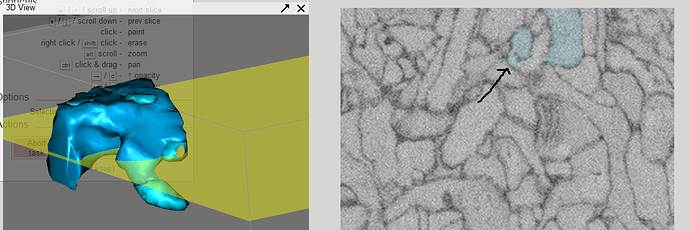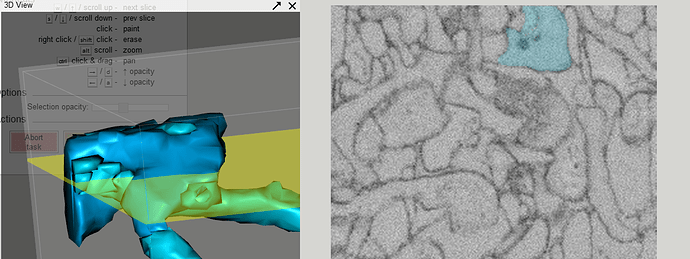This may or may not be a synapse, but I’d bet it’s not. This seems to me just an accidental contact of two neurons. Synapses have larger surface area of contact than this does, and the presynaptic sides have dented ‘holder’ on which postsynaptic sides can be placed.
Another example. Visually it seems like they do connect at 1 or 2 slices, but my guess is that’s just due to the resolution not being high enough? Generally when adding a particular part results in an entire different ‘passing’ branch being added I don’t add it. I’m guessing this is what we should be doing, but it would help greatly to point this out in detail in the tutorial. Thank you!
Another slice that makes me believe it is actually branching from the main structure. So … what are the guidelines on deciding on this?
I agree with you. This seems like a branch from another neuron that is passing underneath of a π shaped structure. You had a good point. The overall shape of the structure that selected pieces make gives great hint.
I am sometimes fooled by staining gaps also. Sometimes I scroll up and down a few times to see if the border only disappears for one or two slices. Also, one of the intuitions I have is that a neuron doesn’t form (or rarely forms) an X structure, which is what would happen if you had two separate sections merge into one section for a slice or two, and then split again. That’s helped me on more than one occasion to disambiguate an unclear slice.
It’s difficult for me to tell without being able to scroll up and down through the volume. I do this rapidly back and forth to try to get a feel for where each path is going (or, as I like to say, where each path is blobbing off to).





